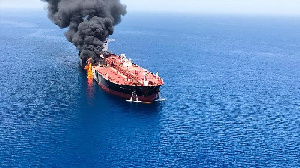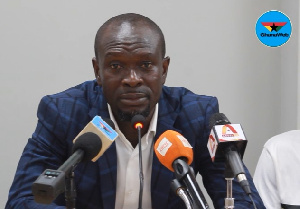Asia
Gulf of Oman tanker attacks: US says video shows Iran removing mine

The US military has released a video which it says shows Iranian special forces removing an unexploded mine from the side of an oil tanker damaged in an attack in the Gulf of Oman on Thursday.
The US also released images of the Japanese tanker apparently showing the unexploded mine before it was removed.
A Norwegian tanker in the gulf also reported being hit by three blasts.
The US accused Iran of being behind the attacks. Iran said it “categorically” rejected the allegation.
The blasts came a month after four oil tankers were damaged in an attack off the coast of the United Arab Emirates. The US blamed Iran for that attack, but did not produce evidence. Iran also denied those accusations.
Tensions between the US and Iran have escalated significantly since US President Donald Trump took office in 2017. He abandoned a nuclear deal that was brokered by the Obama administration and significantly tightened sanctions on Iran.
Oil prices jumped as much as 4% after Thursday’s incident. The Gulf of Oman lies at one end of a vital shipping lane through which a third of the world’s seaborne oil passes every year.
What we know about the explosions
According to the US account of events, US naval forces in the region received distress calls from the Norwegian-owned Front Altair at 06:12 (02:13 GMT) and from the Japanese-owned Kokuka Courageous at 07:00, following explosions, and moved towards the area.
It said the USS Bainbridge observed Iranian naval boats operating in the area in the hours after the explosions, and later removing the unexploded mine from the side of the Kokuka Courageous.
The crews of both vessels were evacuated to other ships nearby. Both Iran and the US later released pictures showing rescued crew members on board their vessels.
The operator of the Kokuka Courageous, BSM Ship Management, said its crew abandoned ship after observing a fire and an unexploded mine.
The Kokuka Courageous was about 30km (20 miles) off the Iranian coast when it sent its emergency call.
The Front Altair was carrying naphtha, a petrol product, from the United Arab Emirates to Taiwan. The Kokuka Courageous was carrying methanol from Saudi Arabia to Singapore.
What did the US say?
US Secretary of State Mike Pompeo said at a news conference in Washington: “It is the assessment of the United States that the Islamic Republic of Iran is responsible for the attacks.
“This assessment is based on intelligence, the weapons used, the level of expertise needed to execute the operation, recent similar Iranian attacks on shipping, and the fact that no proxy group operating in the area has the resources and proficiency to act with such a high degree of sophistication.”
UK Foreign Secretary Jeremy Hunt said his country’s “starting point” was to “believe our US allies”.
“We are taking this extremely seriously and my message to Iran is that if they have been involved it is a deeply unwise escalation which poses a real danger to the prospects of peace and stability in the region,” Mr Hunt said.
How did Iran respond?
Iranian President Hassan Rouhani on Friday accused the US of posing “a serious threat to stability in the Middle East”, without referring directly to the attacks in the Gulf of Oman.
He reiterated a call for international parties to the 2015 nuclear deal to honour their commitments, following a unilateral withdrawal by the Trump administration.
In a statement released on Friday, the Iranian mission to the United Nations said it rejected what it called “unfounded” and “Iranophobic” allegations by the US.
“Iran categorically rejects the US’ unfounded claim with regard to 13 June oil tanker incidents and condemns it in the strongest possible terms,” the statement said.
Foreign Minister Javad Zarif on Twitter accused the US of making an allegation “without a shred of factual or circumstantial evidence” and attempting to “sabotage diplomacy”.
Why are US-Iran tensions so high?
In 2018, the US pulled out of the landmark nuclear deal reached in 2015 that was aimed at curbing Iran’s nuclear activities. The move was strongly criticised by a number of countries, including the closest allies of the US.
In May, President Trump tightened US sanctions on Iran – mainly targeting its oil sector. Iran then announced it would suspend some commitments under the nuclear deal.
In recent months, the US has strengthened its forces in the Gulf – saying there was a danger of Iranian attacks. It sent an aircraft carrier strike group and B-52 bombers to the region.
In response, Iran accused the US of aggressive behaviour. Those tensions rose markedly after the 12 May limpet mine attacks in the UAE.
The UAE blamed an unnamed “state actor”. The US said that actor was Iran, an accusation Tehran denied.
While it is unclear why Iran would carry out a relatively low-level attack on the multinational tankers, observers have speculated that it could have been to send a signal to forces ranged against it that it is capable of disrupting shipping there without triggering a war.
Source: bbc.com










